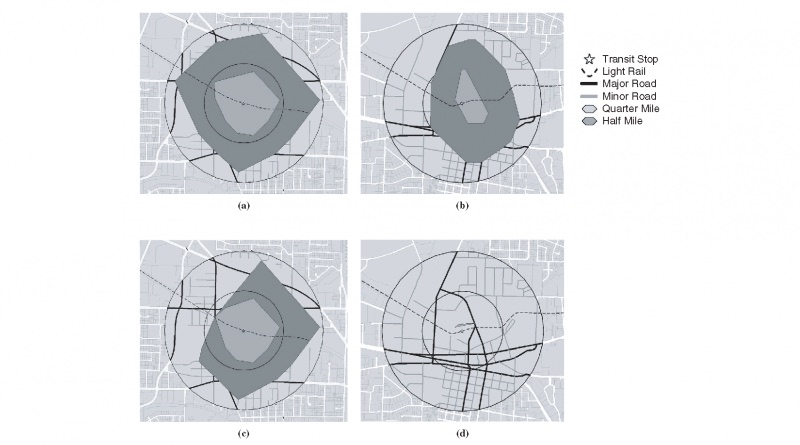Bursting the Bubble: Determining Transit-Oriented Development’s Walkable Limits. (2007). Brian Canepa, Nelson\Nygaard Consulting Associates. Transportation Research Record: Journal of the Transportation Research Board, No. 1992, Transportation Research Board of the National Academies, Washington, D.C., pp. 28–34
Canepa challenges the “half-mile circle” that currently defines the limit of transit-oriented development by examining new research that cites variability in this assumption. The report underscores the importance of higher pedestrian levels of service (LOS) in expanding the walkable limits of TOD. Along with street connectivity, Canepa observes that the presence of “an aesthetic urban setting” is the greatest factor in increasing the distance that transit users will walk. He cites smaller block size, an abundance of street trees, and graffiti-free sidewalks as factors contributing to attractive streetscapes and longer walking distances. When such improvements are made, Canepa writes, the area of intensive development can be tripled in size. He also states that such improvements should be a key consideration in comprehensive transit-oriented planning.

